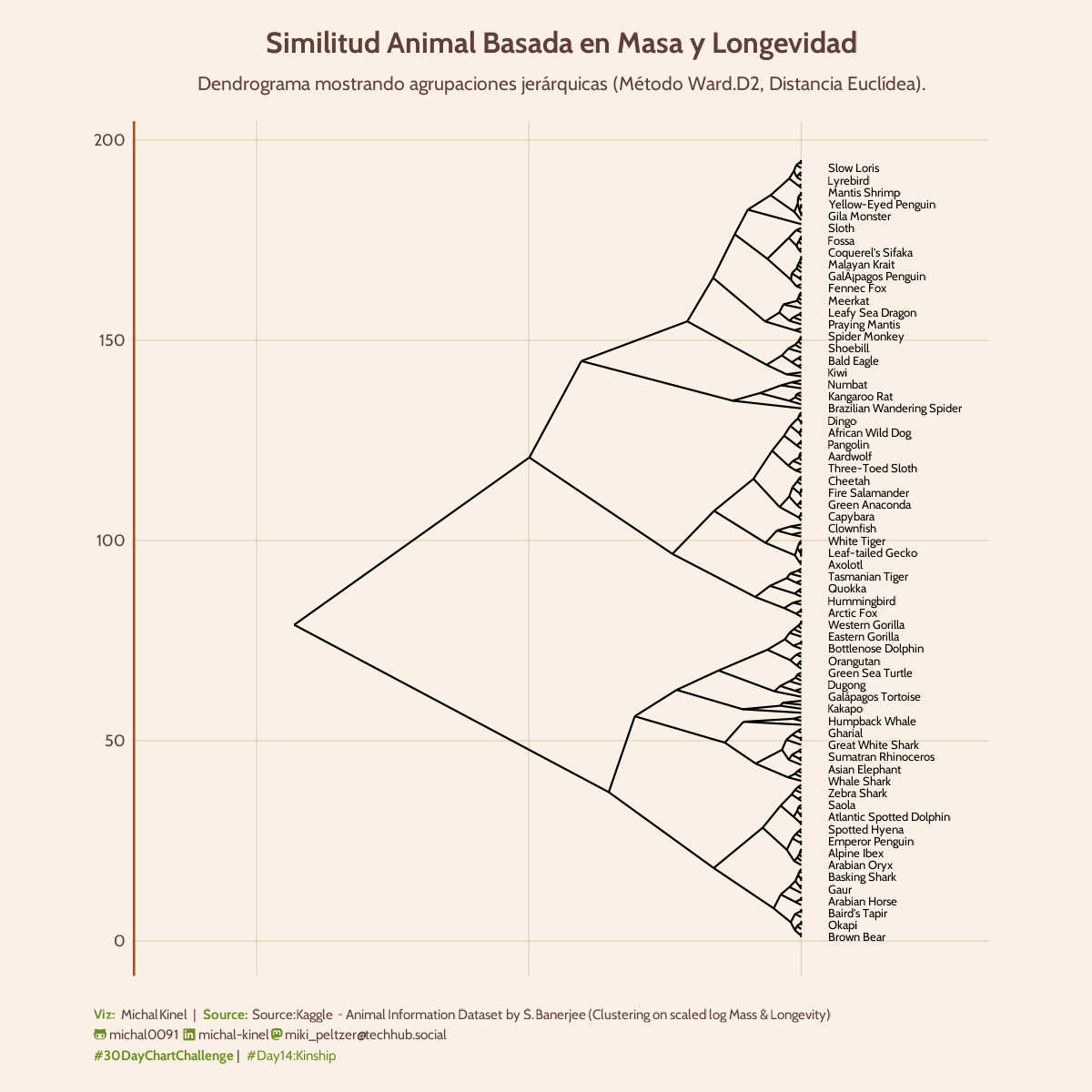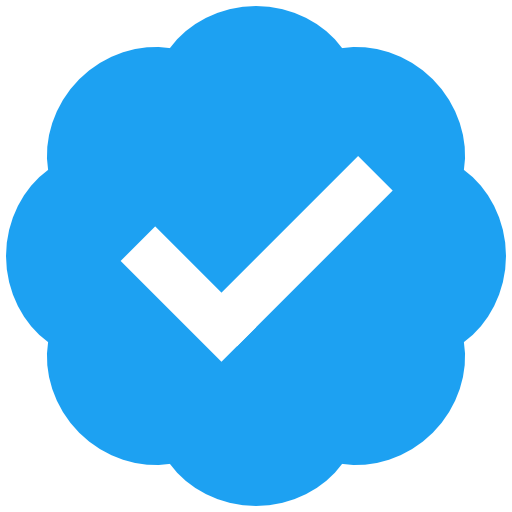#30DayChartChallenge Día 14: Kinship!
Este dendrograma horizontal es el resultado de un clustering jerárquico (hclust Ward.D2) sobre ~170 especies, usando su Masa Corporal y Longevidad Máxima (log-transformadas y escaladas). ¡Muestra quién se agrupa con quién según su estrategia de vida!
Las ramas unen las especies más similares. La longitud horizontal hasta la unión indica cuán diferentes son. Se ven grandes grupos que separan, por ejemplo, animales muy grandes/longevos de otros más pequeños/rápidos. Es una forma de ver la estructura oculta en los datos de rasgos.
(Solo se muestra 1/3 de las etiquetas para no saturar!)


